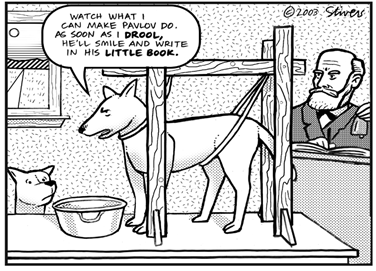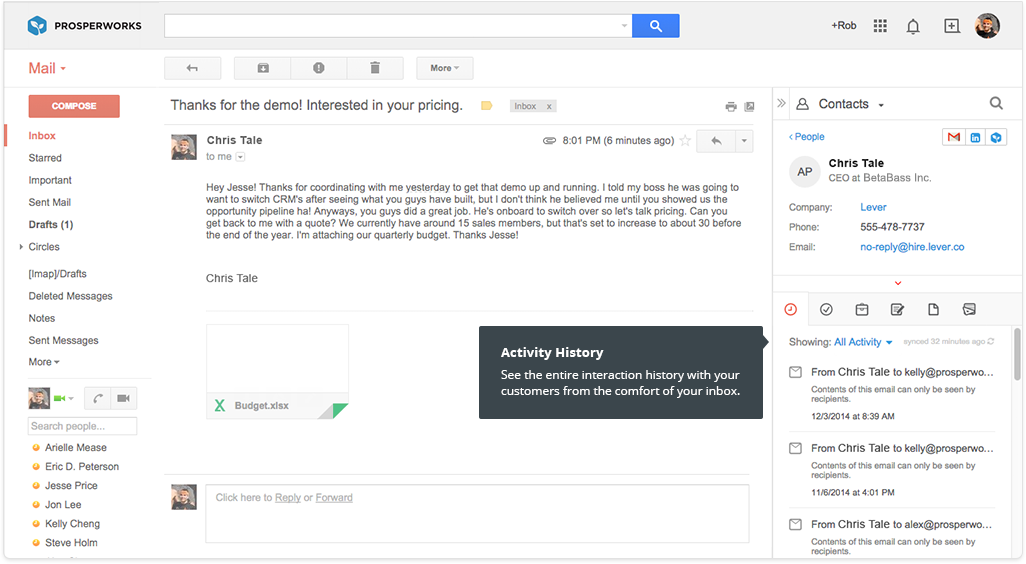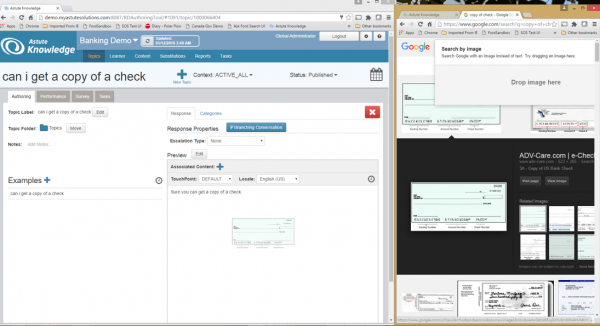How Software Can Improve In-Person Customer Service
My dog once swallowed something he shouldn’t have. After a phone call where the vet convinced me that he was in no immediate danger, we decided to take a “wait and see” approach, which worked out. The following week we went to our annual check-up.
“How’s everything going?” the vet asked. “Anything new with you guys?”
I took a deep breath and recapped our experience of the previous week, then started daydreaming about all the useful things that could be accomplished with the computer on the vet’s desk. I also began to wonder if it was time to start looking for a new vet.
Small and midsize businesses (SMBs) can avoid this disconnect and the customer dissatisfaction it causes. In this report we’ll see how software bridges the gap between phone calls and emails (and other remote communications like live chat) and in-person encounters.
We explain how IT improves in-person customer service and make the case that more SMBs should leverage it to save time, provide better customer experience and leave a better impression.
How Experiences Create Expectations, Fairly or Not
Like dogs, consumers are conditioned by our experiences. When a business provides a customer with an above average service experience, that customer’s expectation of “average” raises.
Over time, the customer expects all businesses to meet the newer, higher standard, even in cases where that wouldn’t be practical. Think of how Uber and Lyft raised the bar for related but not exactly comparable businesses, like taxi services.

That’s exactly what happened at the vet. My expectations weren’t entirely based on my previous experiences at that vet’s office.
Instead, they were conditioned by my many experiences with a wide range of businesses. This might seem a little unfair. Nevertheless, it’s how consumers and the business world operate.
SMBs are expected to deliver services comparable to the world’s most well-resourced companies.
Free shipping and no-questions-asked return policies are examples of perks that began in the enterprise space but later became expected at even the smaller end of the spectrum. The good news? Software has made it easier and cheaper for SMBs to play along.
Customers Expect Seamless Omnichannel Communication
Omnichannel communication is a software capability that consolidates all of a customer’s interactions into a unified record. Years ago, it was very expensive and found only in very big call centers. But thanks to the increased ubiquity of cloud-based software, applications that offer omnichannel capabilities are affordable and easy to implement in even the smallest of offices.


ProsperWorks CRM (on right) integration with Gmail
Many online CRM platforms can automatically consolidate a customer’s queries across phone, email and in-person support. This “single view” of the customer is one important way in which IT can improve in-person customer service.
When I called the vet with my concern, a receptionist answered my call. If the office had different software, or perhaps different training or policies for staff to follow, my record would have been updated with notes from the call and the vet would have known about it when our appointment began. My dog and I would have had a much better customer experience.
Knowledge Management: Customers Expect Consistent Information
After explaining the situation, he put me on hold to consult with the vet herself, relaying the information to me after a few minutes’ wait. And there’s nothing wrong with that! Clearly, this was a situation where the accuracy of the answer was more important than the speed with which it was delivered.
But, imagine how I would have felt if I’d received different information at our in-person appointment. That would have been a serious cause for concern! What would have happened if the vet was unavailable when I’d called in? Would the receptionist have given a different answer? Hopefully not, but it seems possible.
Knowledge management (KM) applications are designed to prevent this from happening. They help create and maintain a central repository for information needed to handle common customer inquiries. They ensure that customers get consistent answers to their questions, no matter whom they speak with, when or on which channel.


Answering an emailed query from Astute Knowledge KMS
And KM tools do much more than improve the customer experience. They also improve more direct measures of a customer service department’s performance, like first-call resolution and time to answer.
According to Gartner, response time can be cut by 20 percent with KM tools. (From “Knowledge Management Will Transform CRM Customer Service“, available to Gartner clients.)
The same report showed that effective KM tools and policies have a positive impact and measurable ROI on a variety of other metrics, including:
A 40 percent reduction in inbound emails due to easy access to information.
A 25 percent headcount shift away from low-value calls due to self-service knowledge search.
A 40 percent reduction in talk time in a support center.
Bear in mind that those statistics come from KM initiatives in the enterprise space and that SMB results may vary. Nevertheless, KM and omnichannel tools can be equally effective for SMBs, and can help you remain competitive with larger businesses.
Like me with my vet, more of your customers are expecting the types of experiences that tools like omnichannel customer support and KM help provide. Thankfully, these tools are cheaper and easier to use than ever before.